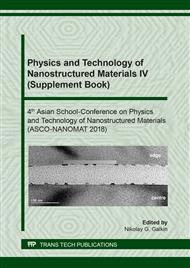p.155
p.161
p.167
p.175
p.180
p.186
p.192
p.197
p.203
Using Confocal Laser Scanning Microscopy to Study an Ambers, a New Approach
Abstract:
Currently, in the scientific literature, there is no a sole opinion on mechanisms governing phenomenon of blue amber. In specimens sampled in Dominican Republic it is caused by presence of perylene; whereas, specimens sampled in northern Spain this has not been confirmed. We have obtained specimens from a third, earlier not studied, source of blue amber in the Far East of Russia that was described in 2015. This sample was investigated with a laser confocal microscopy and a laser bleaching studies. We found fluorescence pattern that is typical for perylene and bleaching showed rapid diffusion that is consistent with the perylene hypothesis. Moreover we demonstrate that confocal laser scanning microscopy could be successfully used for rapid search of the organisms in the dark part of the amber samples.
Info:
Periodical:
Pages:
197-202
Citation:
Online since:
June 2019
Keywords:
Price:
Сopyright:
© 2019 Trans Tech Publications Ltd. All Rights Reserved
Share:
Citation:


